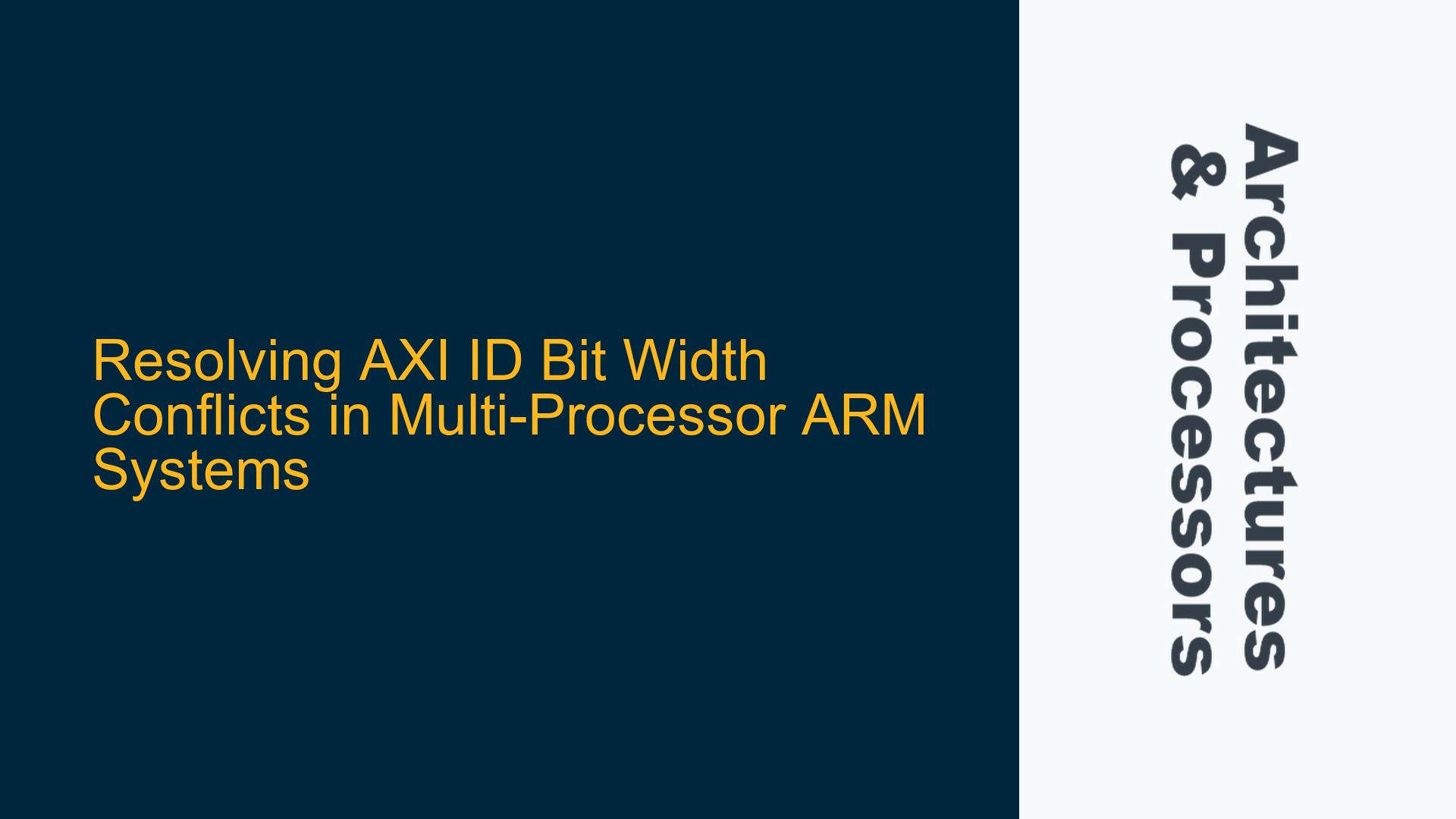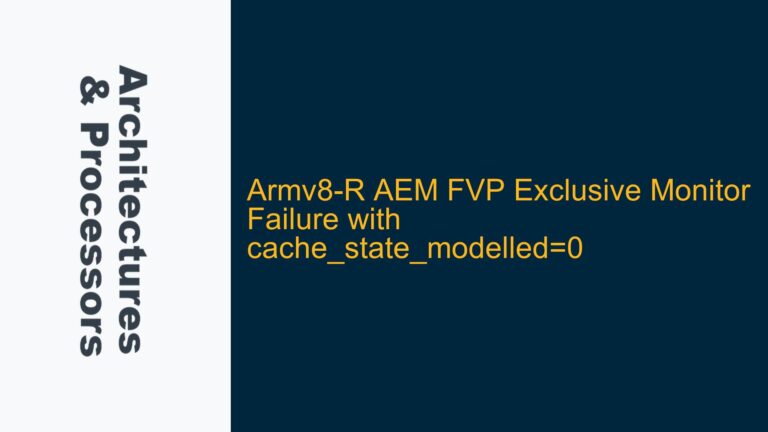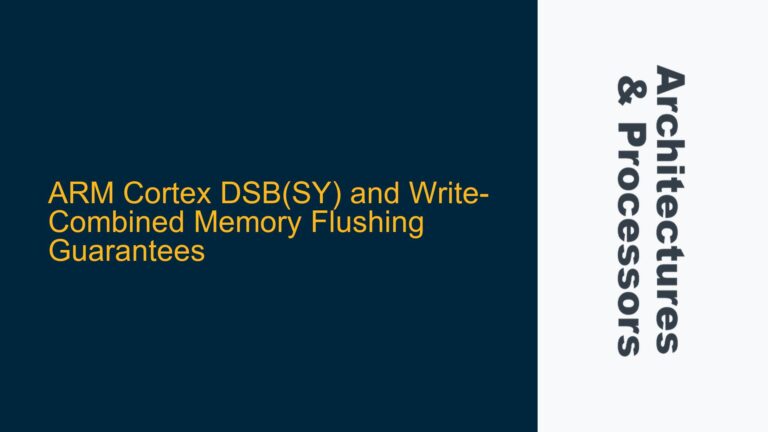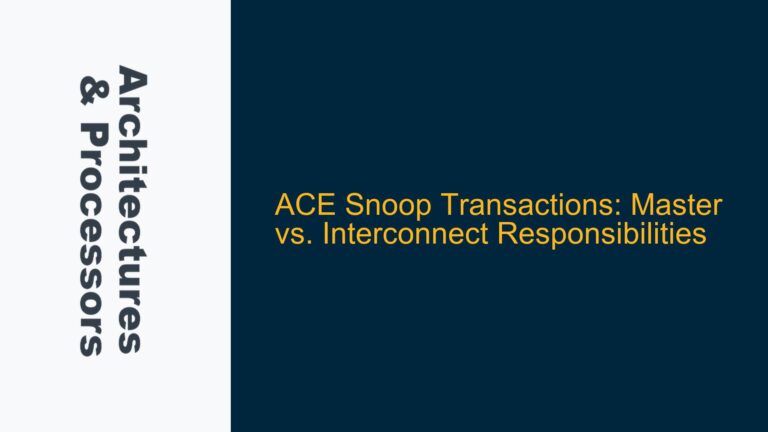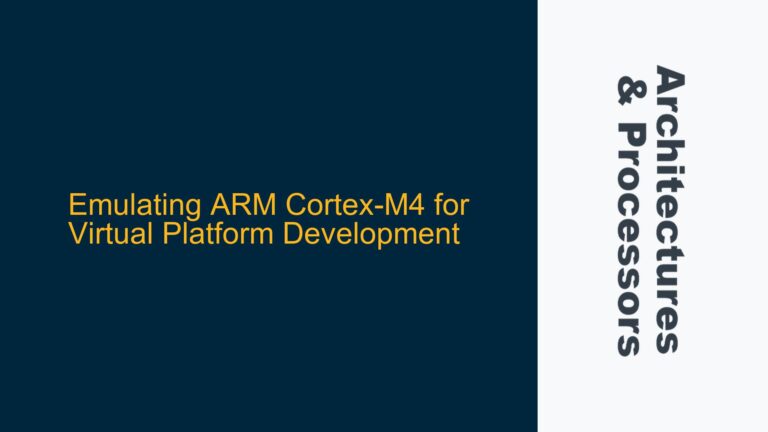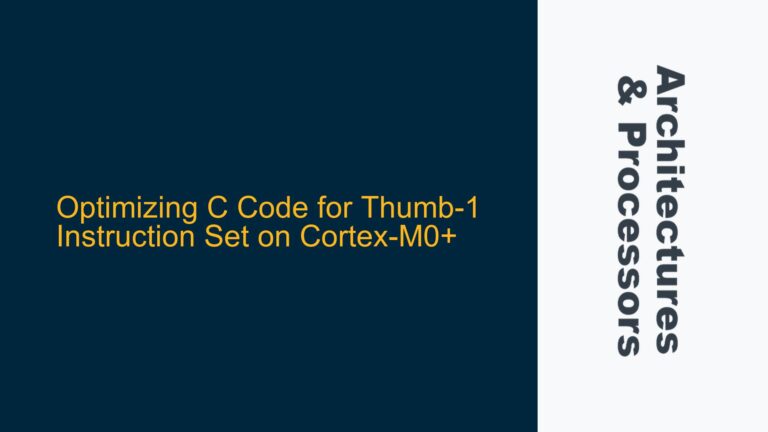AXI ID Bit Width Mismatch in Multi-Processor Systems with A15 and R7 Cores
In multi-processor ARM systems, integrating different cores such as the Cortex-A15 and Cortex-R7 on separate AXI buses can introduce challenges when attempting to establish communication between the two systems. One such challenge is the conflict arising from the AXI ID bit width mismatch between the master and slave interfaces. The AXI protocol uses transaction IDs to manage outstanding transactions, and these IDs must be unique to ensure correct operation. However, when connecting two systems with different AXI ID bit widths, the ID encoding can become inconsistent, leading to potential data corruption, transaction failures, or system deadlocks.
The Cortex-A15 and Cortex-R7 cores typically operate on separate AXI buses, each with its own interconnect and ID bit width requirements. The AXI ID bit width is determined by the number of master interfaces and the complexity of the interconnect. When these systems are connected to allow mutual access, the ID bit width of the master interfaces on one system may not match the ID bit width expected by the slave interfaces on the other system. This mismatch can result in ID collisions, where two different transactions are assigned the same ID, causing the system to misinterpret or lose track of transactions.
To address this issue, it is essential to analyze the ID bit width requirements of both systems and implement strategies to reconcile the differences. This involves examining the ID encoding schemes, identifying redundant or static bits, and potentially redesigning the interconnect logic to ensure compatibility. The goal is to maintain the uniqueness of transaction IDs across the combined system while minimizing the impact on performance and resource utilization.
Redundant ID Bits and Interconnect Configuration Issues
The primary cause of AXI ID bit width conflicts in multi-processor systems is the presence of redundant or unnecessary ID bits in the transaction encoding. In many cases, the ID bit width is over-provisioned to accommodate the worst-case scenario, resulting in bits that remain static or are derived from other bits. These redundant bits can be eliminated or compressed to reduce the effective ID bit width, thereby resolving the conflict.
Another contributing factor is the configuration of the AXI interconnect. The interconnect is responsible for routing transactions between masters and slaves, and it assigns IDs based on the number of master interfaces and the routing logic. If the interconnect is not configured optimally, it may generate IDs with unnecessary bits or fail to utilize the available ID space efficiently. This can exacerbate the ID bit width mismatch when connecting two systems.
In the case of the Cortex-A15 and Cortex-R7 systems, the AXI interconnect for each core may have different ID bit width requirements due to variations in the number of master interfaces and the complexity of the routing logic. For example, the Cortex-A15 may use an 8-bit ID width, while the Cortex-R7 may use a 6-bit ID width. When these systems are connected, the 8-bit IDs from the Cortex-A15 may not be compatible with the 6-bit IDs expected by the Cortex-R7, leading to conflicts.
To resolve these issues, it is necessary to analyze the ID encoding schemes of both systems and identify opportunities for optimization. This may involve reconfiguring the interconnect, modifying the ID assignment logic, or implementing ID compression techniques. The key is to ensure that the ID bit width is minimized while maintaining the uniqueness of transaction IDs across the combined system.
Optimizing AXI ID Bit Width Through Interconnect Reconfiguration and ID Compression
The first step in resolving AXI ID bit width conflicts is to analyze the ID encoding schemes of both systems and identify redundant or static bits. This can be done by examining the transaction logs and identifying patterns in the ID values. For example, if certain bits in the ID remain constant across all transactions, they can be eliminated or tied to a fixed value. Similarly, if some bits are derived from other bits through logical operations, they can be compressed to reduce the effective ID bit width.
Once the redundant bits have been identified, the next step is to reconfigure the AXI interconnect to minimize the ID bit width. This may involve modifying the routing logic or adjusting the ID assignment algorithm. For example, if the interconnect is using a hierarchical routing scheme, it may be possible to reduce the ID bit width by flattening the hierarchy or reordering the master interfaces. This can help to eliminate unnecessary bits and ensure that the ID space is utilized efficiently.
In cases where reconfiguring the interconnect is not sufficient, ID compression techniques can be employed to further reduce the ID bit width. ID compression involves mapping the original ID values to a smaller set of values using a compression algorithm. This can be done using a lookup table or a mathematical function that maps the original IDs to compressed IDs. The compressed IDs must be unique within the context of the combined system to ensure correct operation.
For example, consider a scenario where the Cortex-A15 system uses 8-bit IDs and the Cortex-R7 system uses 6-bit IDs. To resolve the ID bit width conflict, the 8-bit IDs from the Cortex-A15 can be compressed to 6-bit IDs using a compression algorithm. The compression algorithm must ensure that the 6-bit IDs are unique and do not collide with the IDs used by the Cortex-R7. This can be achieved by reserving a portion of the 6-bit ID space for the Cortex-A15 and another portion for the Cortex-R7.
In addition to ID compression, it may also be necessary to implement ID translation logic at the interface between the two systems. ID translation involves converting the IDs from one format to another to ensure compatibility. For example, if the Cortex-A15 uses a different ID encoding scheme than the Cortex-R7, the IDs can be translated at the interface to match the expected format. This can be done using a translation table or a custom logic block that performs the conversion in real-time.
Finally, it is important to validate the ID bit width optimization and ensure that the system operates correctly after the changes have been implemented. This can be done by running a series of tests to verify that the transaction IDs are unique and that the system can handle the expected workload without errors. The tests should include scenarios with high transaction volumes and complex routing patterns to ensure that the system is robust and reliable.
In conclusion, resolving AXI ID bit width conflicts in multi-processor ARM systems requires a thorough understanding of the ID encoding schemes and the interconnect configuration. By identifying redundant bits, reconfiguring the interconnect, and implementing ID compression and translation techniques, it is possible to reconcile the ID bit width differences and ensure correct operation of the combined system. The key is to minimize the ID bit width while maintaining the uniqueness of transaction IDs and optimizing the system performance.
